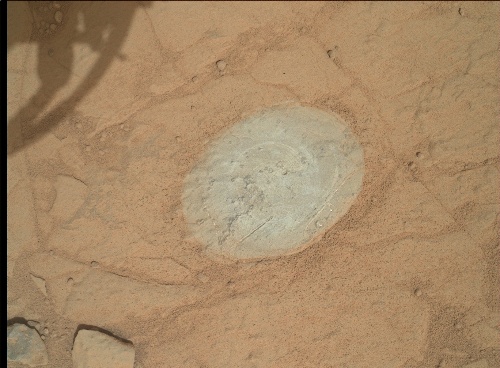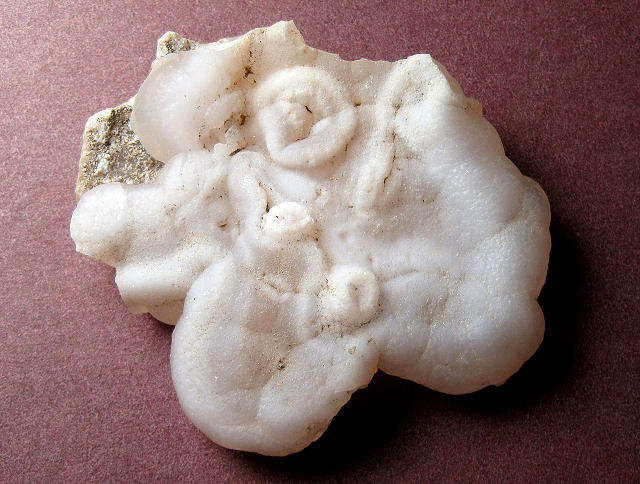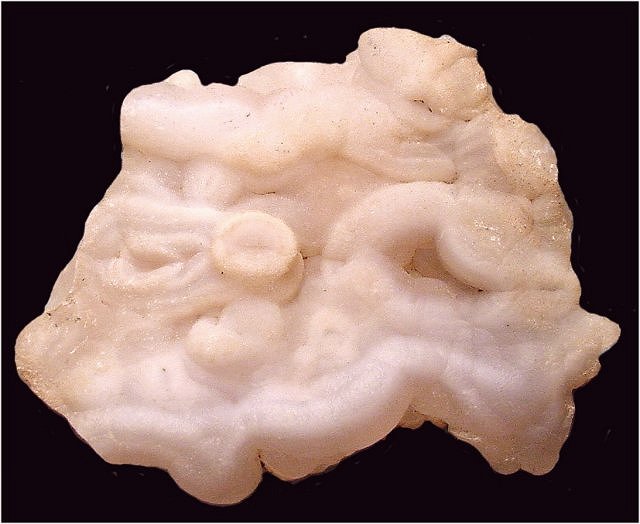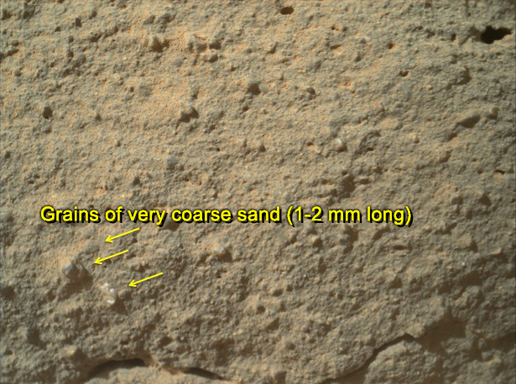It looks like you're using an Ad Blocker.
Please white-list or disable AboveTopSecret.com in your ad-blocking tool.
Thank you.
Some features of ATS will be disabled while you continue to use an ad-blocker.
share:
Originally posted by ArMaP
Originally posted by VonDinkinDunken
I see people criticizing Raffaele for merely considering the possibility this may very well be a shell.
I don't, who is criticizing Raffaele for thinking this may be a shell?
Exactly. This is what's going on. This is just to show others:
Originally posted by Raffaele
Originally posted by ArMaP
With the risk of moving this thread further off topic, could you please tell us what rights are those?
Thanks in advance.edit on 6/1/2013 by ArMaP because: (no reason given)
I'll show you what are my rights when and if the sample turns out to be really a shell. That's all.edit on Sun Jan 6 2013 by DontTreadOnMe because: (no reason given)
Originally posted by Raffaele
I NEVER said itIS
a shell !
You will also be "all ears"...surely you haven't eyes...edit on 6-1-2013 by Raffaele because: (no reason given)
???
What the hell is going on here?
My dad was with NASA and I combed through the Global Surveyor images.
I spotted the first Martian 'Glass Worm' image in late '98 and sent it to Richard Hoagland. I called it a 'Glass Worm' and I had a Geocities site about it. Nice of Hoagland to say his 'researchers' discovered it.
Some good images of the Glass Worm: www.viewzone.com...
But what I had done first with the photo was to send it to the head of Geosciences at a southern US University and asked him what type of fossil it was. He replied that it was 'obviously' some type of tube worm or annelid and needed to know what type of rock it was in.
I had wild speculations about panspermic seeding of deep ocean tube worms, that perhaps used silicon (glass) rather than carbon as a 'body building block', which would explain the 'glassy' look to the remains. A few years later I watched the M.A.R.S. ocean expedition discover deep ocean tube worms that use silicon rather than carbon. Odd coincidence there.
About giant tube worms: "They live in conditions of unbelievable pressures of many metric tons to the square centimeter. If we attempt to bring them to the surface, they explode. Some of these creatures can tolerate temperatures that are in excess of 600 degrees Celsius near and above the volcanic vents. These vents spew out a constant brew of sulfur materials that to us would be concentrated battery acid."
There are also tube worms that live in Cold Extremes in the Arctic and Antarctic.
And: "Since extremophiles live in such conditions on earth, it would not be too surprising given panspermia, that life will be found on the Jovian moons and Titan. Below the icy surface of these moons exists liquid water and plenty of ecosystems that could support unfamiliar life. One of the moons shows curious evidence by the upwelling of brownish material around ice cracks. This may be of biological origin or might be large amounts of expelled extremophiles. Life of an extremophile sort may be found on Mars that has now been proven to contain vast reserves of frozen water just below the dusty surface."
syzygyastro.hubpages.com...
Also here is a rather new article with some amazing new images:
"Strange, worm like images captured on Mars"
www.examiner.com...
I spotted the first Martian 'Glass Worm' image in late '98 and sent it to Richard Hoagland. I called it a 'Glass Worm' and I had a Geocities site about it. Nice of Hoagland to say his 'researchers' discovered it.
Some good images of the Glass Worm: www.viewzone.com...
But what I had done first with the photo was to send it to the head of Geosciences at a southern US University and asked him what type of fossil it was. He replied that it was 'obviously' some type of tube worm or annelid and needed to know what type of rock it was in.
I had wild speculations about panspermic seeding of deep ocean tube worms, that perhaps used silicon (glass) rather than carbon as a 'body building block', which would explain the 'glassy' look to the remains. A few years later I watched the M.A.R.S. ocean expedition discover deep ocean tube worms that use silicon rather than carbon. Odd coincidence there.
About giant tube worms: "They live in conditions of unbelievable pressures of many metric tons to the square centimeter. If we attempt to bring them to the surface, they explode. Some of these creatures can tolerate temperatures that are in excess of 600 degrees Celsius near and above the volcanic vents. These vents spew out a constant brew of sulfur materials that to us would be concentrated battery acid."
There are also tube worms that live in Cold Extremes in the Arctic and Antarctic.
And: "Since extremophiles live in such conditions on earth, it would not be too surprising given panspermia, that life will be found on the Jovian moons and Titan. Below the icy surface of these moons exists liquid water and plenty of ecosystems that could support unfamiliar life. One of the moons shows curious evidence by the upwelling of brownish material around ice cracks. This may be of biological origin or might be large amounts of expelled extremophiles. Life of an extremophile sort may be found on Mars that has now been proven to contain vast reserves of frozen water just below the dusty surface."
syzygyastro.hubpages.com...
Also here is a rather new article with some amazing new images:
"Strange, worm like images captured on Mars"
www.examiner.com...
You are comparing HUGE, geological features which "somewhat resemble a giant worm"...to a tiny feature embedded in stone?
edit on 7-1-2013 by
flexy123 because: (no reason given)
reply to post by flexy123
Extremophile tube worms are sized from nearly microscopic to over 8 feet in length- depending on type. If you had taken 2 minutes to read the links you would know that.
Extremophile tube worms are sized from nearly microscopic to over 8 feet in length- depending on type. If you had taken 2 minutes to read the links you would know that.
edit on 7-1-2013 by Stratus9 because: (no reason given)
We know Mars has had vast oceans like on earth. If life had a chance to evolve then the rover finding fossils on the surface in these areas is a high
probability. That white part sticking out resembles a white mother of pearl looking shell. It's totally out of place sticking out of hardened
sandstone. It's almost like a dead give away that this is some type of oceanic fossil or coral, maybe a gemstone. I have done my fair share of
prospecting and fossil diggings and have come across things like this in rocks and in the most unsuspecting places. High up in the mountains I have
found fossil clams.
The following is my opinion as a member participating in this discussion.
Originally posted by Stratus9
My dad was with NASA and I combed through the Global Surveyor images.
I spotted the first Martian 'Glass Worm' image in late '98 and sent it to Richard Hoagland. I called it a 'Glass Worm' and I had a Geocities site about it. Nice of Hoagland to say his 'researchers' discovered it.
I wonder what had happened if you had just seen them as what they (probably) are, dunes.
As an ATS Staff Member, I will not moderate in threads such as this where I have participated as a member.
The following is my opinion as a member participating in this discussion.
Originally posted by sean
We know Mars has had vast oceans like on earth. If life had a chance to evolve then the rover finding fossils on the surface in these areas is a high probability.
Yes, this area where Curiosity landed looks excellent for finding fossils.
High up in the mountains I have found fossil clams.
I'm near the ocean, but I have also found many clam-like fossilized shells. I don't know where they are now, I think my mother threw most of them away many years ago.
But I kept the best.
As an ATS Staff Member, I will not moderate in threads such as this where I have participated as a member.
edit on 7/1/2013 by ArMaP because: (no reason given)
Here you go, a martian fossil found!

mars.jpl.nasa.gov...
Looks like a trilobite.
(Now, a task for you: figure out what it really is)

mars.jpl.nasa.gov...
Looks like a trilobite.
(Now, a task for you: figure out what it really is)
Originally posted by wildespace
Here you go, a martian fossil found!
mars.jpl.nasa.gov...
Looks like a trilobite.
(Now, a task for you: figure out what it really is)
Very interesting.....is this on Mars..??
Originally posted by Soloprotocol
Very interesting.....is this on Mars..??
Yes, I even provided the link to the original source.
Originally posted by wildespace
Originally posted by Soloprotocol
Very interesting.....is this on Mars..??
Yes, I even provided the link to the original source.
A tree stump..
Maybe the rover just blew away the surface soil....still baffled..
edit on 7-1-2013 by Soloprotocol because: (no reason given)
Originally posted by Sublimecraft
It also casts an almost triangular shadow that is longer than the shadow of the rock above it on the LHS.
Whatever it is, it protrudes past the rock face quite substantially.
Hmmm........curiouser and curiouseredit on 29-12-2012 by Sublimecraft because: added comment
As on the time of my post, sol 132 raw images (Mars Hand Lens Imager page with 'flower' pictures) has just 20 images in 'Subframe' division, including the following 8 images:
two 'flower' area images, time stamps 17:44:33 UTC and 20:10:10 UTC
two images of rock A (my designator) with deep vertical crack, time stamps 17:39:49 UTC and 20:15:20 UTC
two images of rock B (my designator) with deep horizontal crack, time stamps 17:56:19 UTC and 20:04:38 UTC
two images of rock C (my designator) with deep horizontal crack, time stamps 18:01:05 UTC and 19:59:43 UTC
According to the time stamps, time difference between the first picture and the second picture in each of the above mentioned pairs is:
for 'flower' area - 2 hours 26 minutes
for rock A - 2 hours 36 minutes
for rock B - 2 hours 8 minutes
for rock C - 1 hour 58 minutes.
However, the shadows length and shape in each pair of images looks the same, as if the sun did not change the position on the sky. Does anybody pay attention to it? Why can it be?
Originally posted by seamus
reply to post by Arken
Looks like an opal. You know, a rock?
The following is my opinion as a member participating in this discussion.
That's actually a reasonable guess.
That luster becomes apparent due to the water molecules if memory serves (SiO2•n(H2O)).
By the shape I'd expect that any Geologist's first thought would be Chalcedony to be honest. I've collected many samples of it over the years and that is just what it looks like.
My original major, more years ago than I care to mention was Geology and I did graduate but never used the bit of paper as I worked in other fields. I've been an avid collector since age 9 (almost 60 now) and have sold collections museums would foam at the mouth over. I see that I reach down to pick up a piece of Chalcedony (Quartz).
My humble opinion of course.
Some quick photo's pulled from the web (usually it's weathered smooth and looks just like the item in this photo).



As an ATS Staff Member, I will not moderate in threads such as this where I have participated as a member.
Originally posted by Stratus9
reply to post by flexy123
Extremophile tube worms are sized from nearly microscopic to over 8 feet in length- depending on type. If you had taken 2 minutes to read the links you would know that.
The MOC images on the link given by you have 4.47 resolution PER PIXEL. The features you refer to are not a few feet long, but almost a mile. Anything else about those features you used to compare leaves no doubt it's natural, geological features, there is nothing "odd" about them.
This comparison is as silly as taking a satellite image of the Grand Canyon and claiming it's a giant snake since the form "somewhat" resembles a snake.
The only difference: The tiny "flower" worm thing embedded in the stone is indeed an interesting feature worth investigating from a scientific point of view, while the giant "tube worms" are just silly fringe science.
edit on 8-1-2013 by flexy123 because: (no reason given)
Originally posted by wildespace
Here you go, a martian fossil found!
mars.jpl.nasa.gov...
Looks like a trilobite.
(Now, a task for you: figure out what it really is)
Originally posted by Soloprotocol
Originally posted by wildespace
Originally posted by Soloprotocol
Very interesting.....is this on Mars..??
Yes, I even provided the link to the original source.
A tree stump..
Maybe the rover just blew away the surface soil....still baffled..edit on 7-1-2013 by Soloprotocol because: (no reason given)
They used a rotating wire-brush on the rock. They used a brush to scrape away dust and dirt.
Wildespice - I like what you did there.
edit on 1/8/2013 by impaired because: (no reason given)
Arken's "flower" is on Fox News now. www.foxnews.com...
And yes, the picture I posted above is of a rock brushed of dust by the Curiosity. mars.jpl.nasa.gov...
And yes, the picture I posted above is of a rock brushed of dust by the Curiosity. mars.jpl.nasa.gov...
OK guys, the mystery of the "Martian Flower" solved! The big rock is sandstone, and the "flower" is a grain of sand, albeit unusual due to being large
and clear. The reason it looks rounded is most likely due to being carried and buffeted by flowing water.
www.nasa.gov...

Audio recording from the most recent press conference, explaining the MAHLI image: www.dropbox.com...
www.nasa.gov...

Audio recording from the most recent press conference, explaining the MAHLI image: www.dropbox.com...
edit on
15-1-2013 by wildespace because: (no reason given)
new topics
-
DOJ Special Counsel Robert HUR Says JOE BIDEN Can Be ARRESTED After Jan 20th 2025.
Above Politics: 10 hours ago
top topics
-
More Proof of Lawfare
US Political Madness: 17 hours ago, 20 flags -
DOJ Special Counsel Robert HUR Says JOE BIDEN Can Be ARRESTED After Jan 20th 2025.
Above Politics: 10 hours ago, 8 flags
active topics
-
Results of the use of the Oreshnik missile system in Dnepropetrovsk
World War Three • 231 • : andy06shake -
Ok this is some BS now WTH
Rant • 23 • : doctordark -
I thought Trump was the existential threat?
World War Three • 55 • : andy06shake -
Anyone like the Scorpions?
Music • 16 • : andy06shake -
Well, here we go red lines crossed Biden gives the go ahead to use long range missiles
World War Three • 368 • : andy06shake -
The Acronym Game .. Pt.4
General Chit Chat • 987 • : JJproductions -
DOJ Special Counsel Robert HUR Says JOE BIDEN Can Be ARRESTED After Jan 20th 2025.
Above Politics • 10 • : angelchemuel -
Petition Calling for General Election at 564,016 and rising Fast
Political Issues • 89 • : angelchemuel -
-@TH3WH17ERABB17- -Q- ---TIME TO SHOW THE WORLD--- -Part- --44--
Dissecting Disinformation • 3379 • : brewtiger123 -
Mood Music Part VI
Music • 3715 • : Hellmutt

